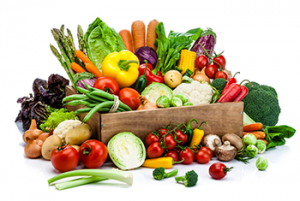Fruit and Vegetable Safety
 According to the Centers for Disease Control and Prevention (CDC) eating a diet with plenty of fruits and vegetables provides important health benefits, but it’s important that you select and prepare them safely. Fruits and vegetables add nutrients to your diet that help protect you from heart disease, stroke, and some cancers. In addition, choosing vegetables, fruits, nuts, and other produce over high-calorie foods can help you manage your weight.
According to the Centers for Disease Control and Prevention (CDC) eating a diet with plenty of fruits and vegetables provides important health benefits, but it’s important that you select and prepare them safely. Fruits and vegetables add nutrients to your diet that help protect you from heart disease, stroke, and some cancers. In addition, choosing vegetables, fruits, nuts, and other produce over high-calorie foods can help you manage your weight.
But sometimes raw fruits and vegetables contain harmful germs, such as Salmonella, pathogenic E. coli, and Listeria, that can make you and your family sick. In the United States, nearly half of foodborne illnesses are caused by germs on fresh produce. The safest produce is cooked; the next safest is washed in clean, clear water and scrubbed (if possible) prior to eating or peeling. Enjoy uncooked fruits and vegetables while taking steps to avoid foodborne illness, also known as food poisoning.
Smart Steps at the store or market
- Choose produce that isn’t bruised or damaged.
- Keep pre-cut fruits and vegetables cold by choosing produce that is refrigerated or kept on ice.
- Separate fruits and vegetables from raw meat, poultry, and seafood in your shopping cart and in your grocery bags.
Smart Steps at home
- Wash your hands, kitchen utensils, and food preparation surfaces, including chopping boards and countertops, before and after preparing fruits and vegetables.
- Rinse fruits and vegetables in clean water before eating, cutting, or cooking, unless the package says the contents have been washed.
- Rinse or scrub fruits and vegetables under running water—even if you do not plan to eat the peel—so dirt and germs on the surface do not get inside when you cut.
- Cut away any damaged or bruised areas before preparing or eating.
- Dry fruit or vegetables with a clean paper towel.
- Keep fruits and vegetables separate from raw foods from animals, such as meat, poultry, and seafood.
- Refrigerate fruits and vegetables you have cut, peeled, or cooked within 2 hours (or 1 hour if the outside temperature is 90°or warmer). Chill them at 40°F or colder in a clean container.
These smart steps are listed in English and Espanol. The CDC has developed a Fruit and Vegetable Safety InfoGrapic (English) and Infografía: Seguridad de las frutas y verduras (Spanish).
To help growers/gardeners and food pantry staff and volunteers learn about produce safety, check out the Safe Produce for Food Pantries project materials. Stay healthy and food safe. Barb



